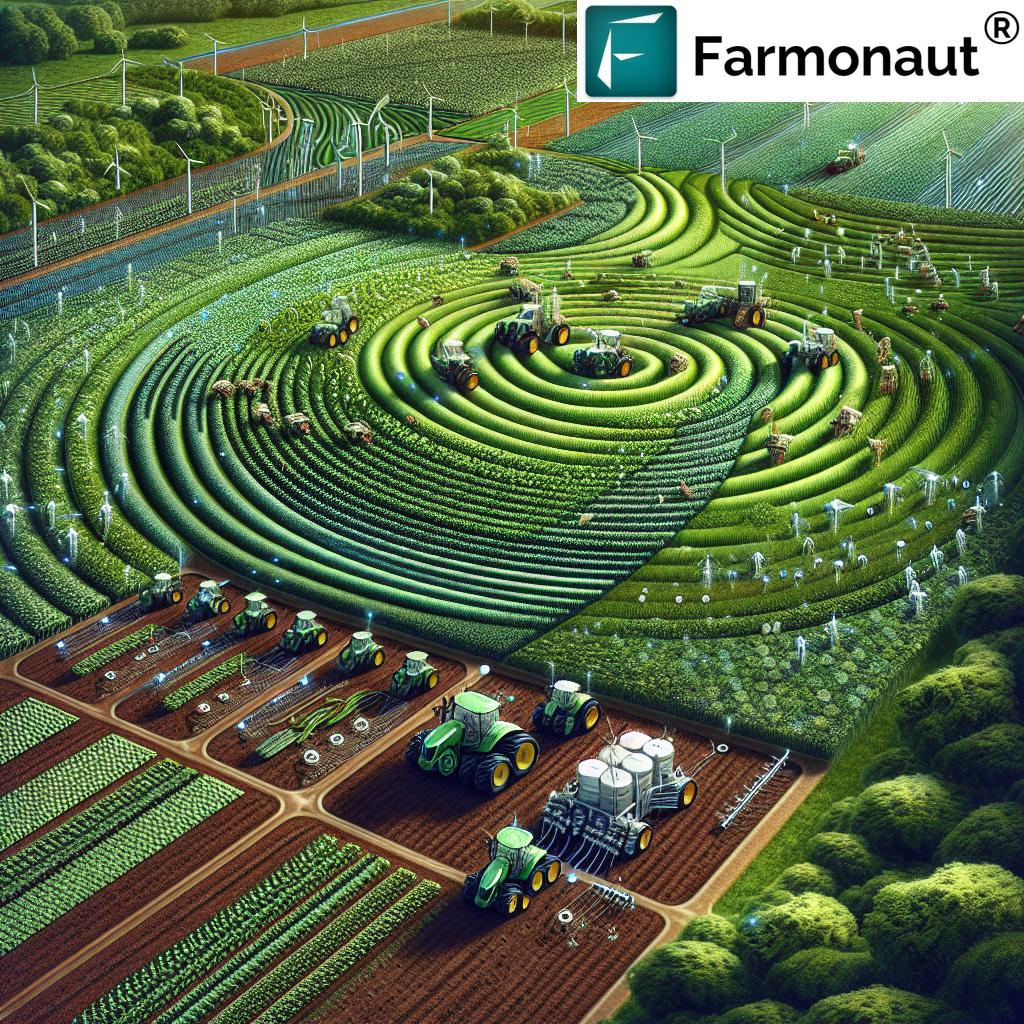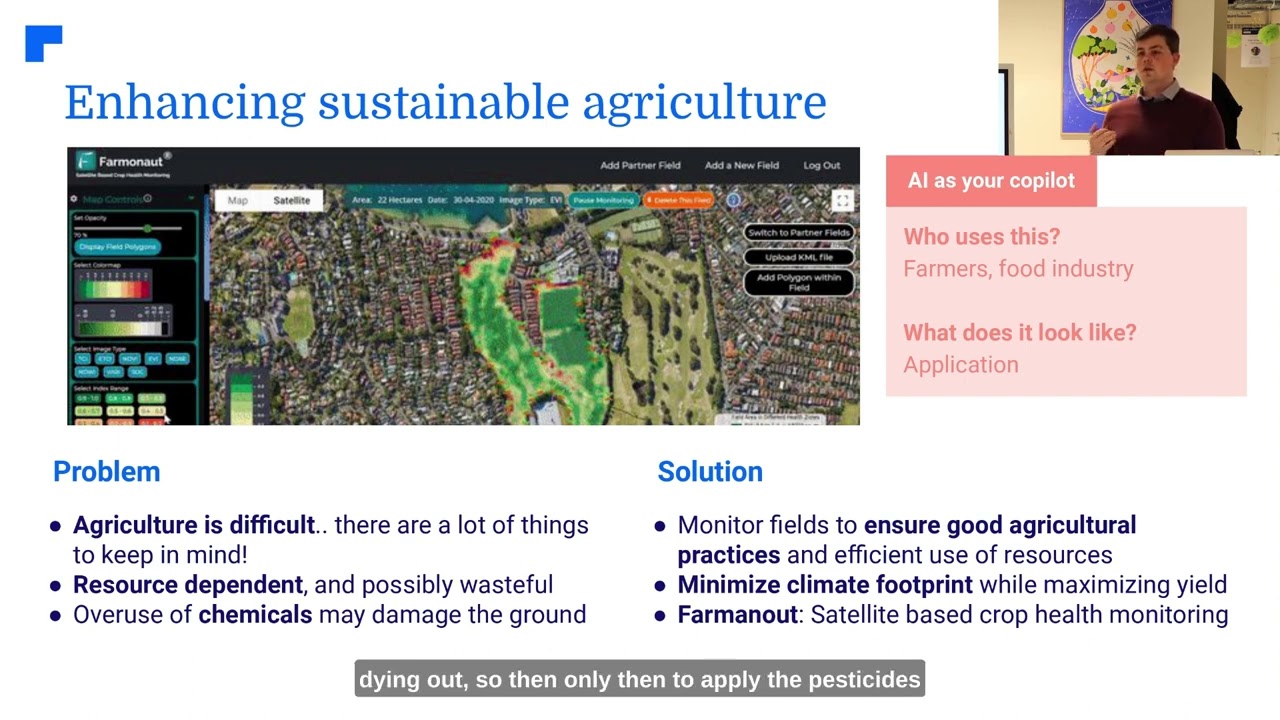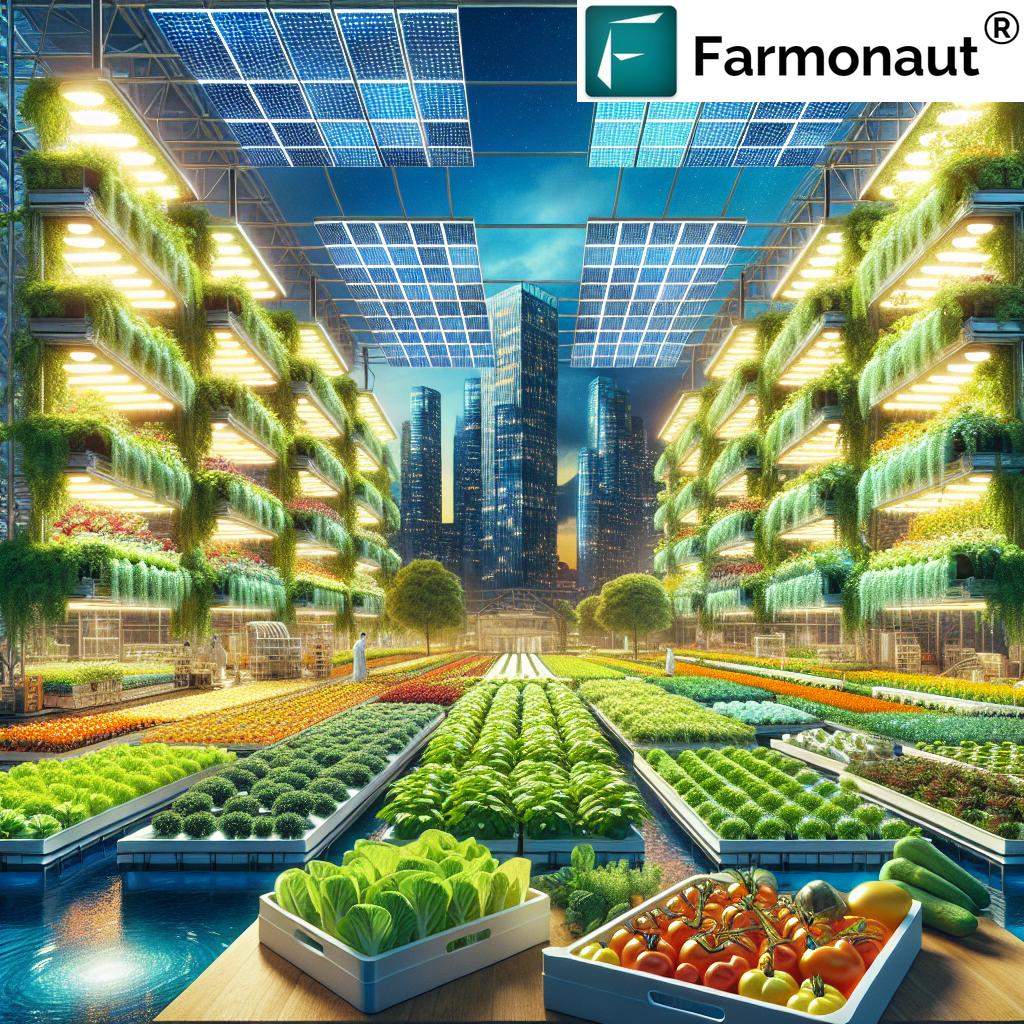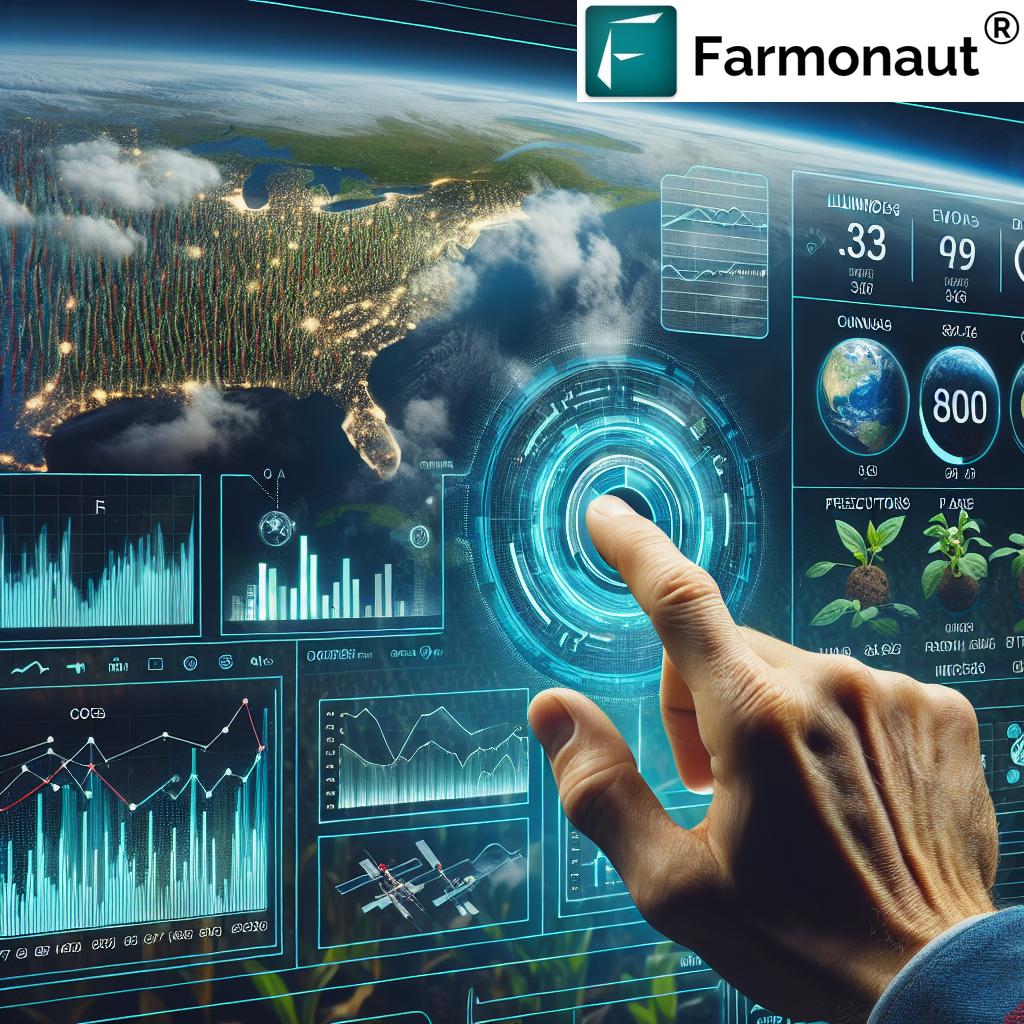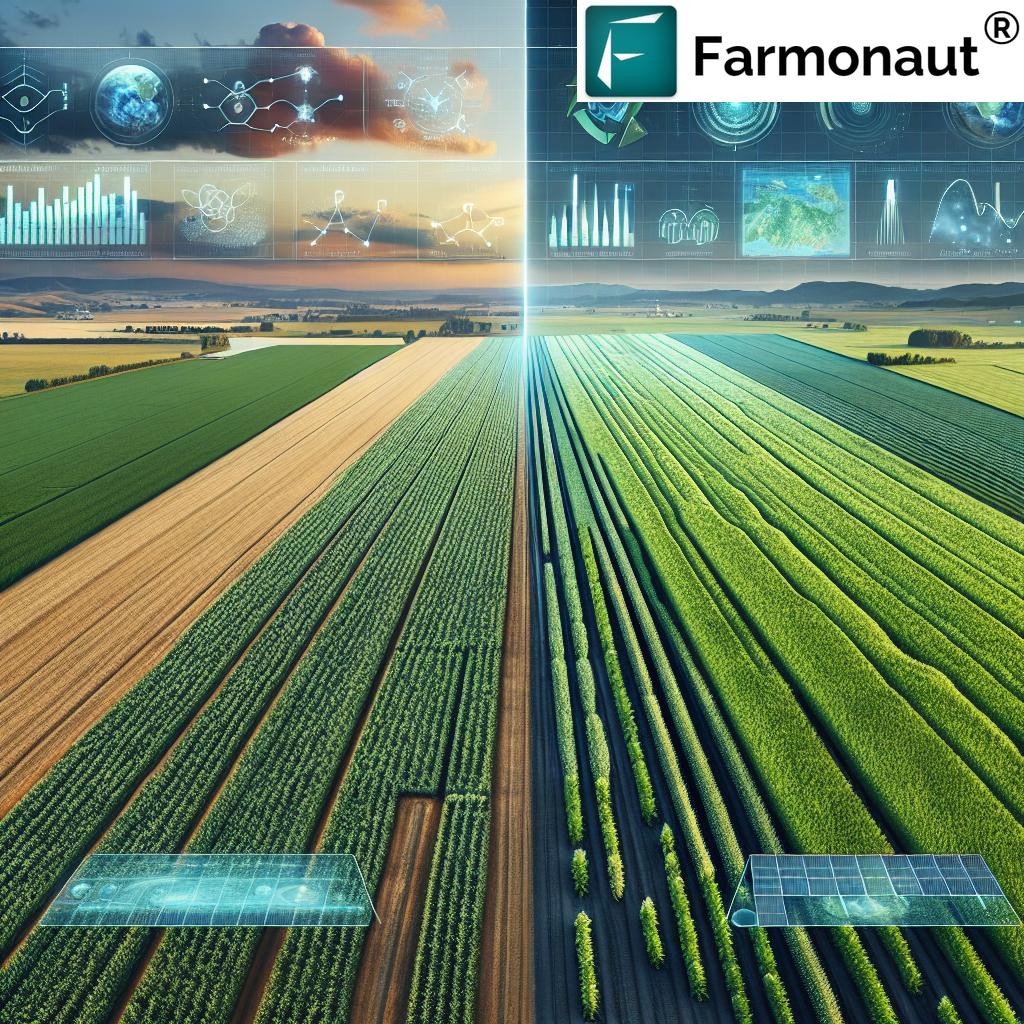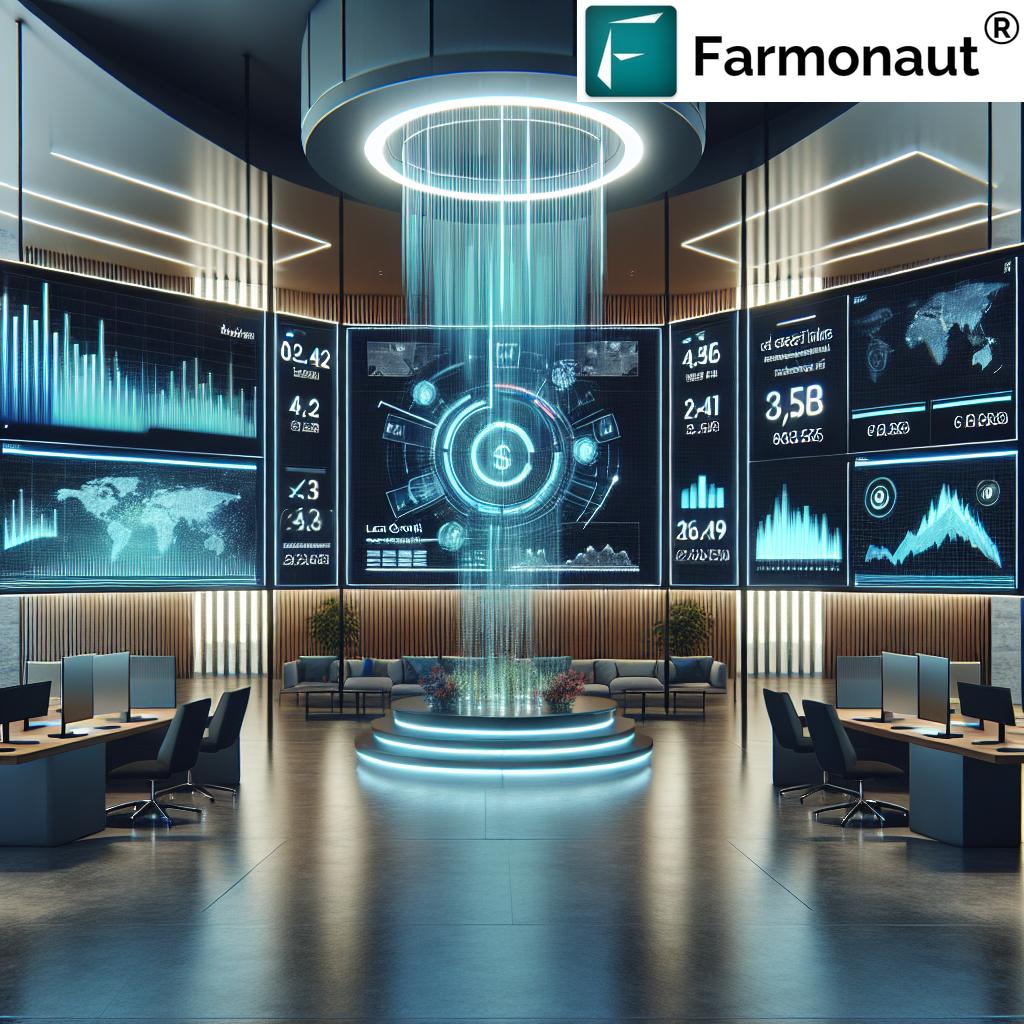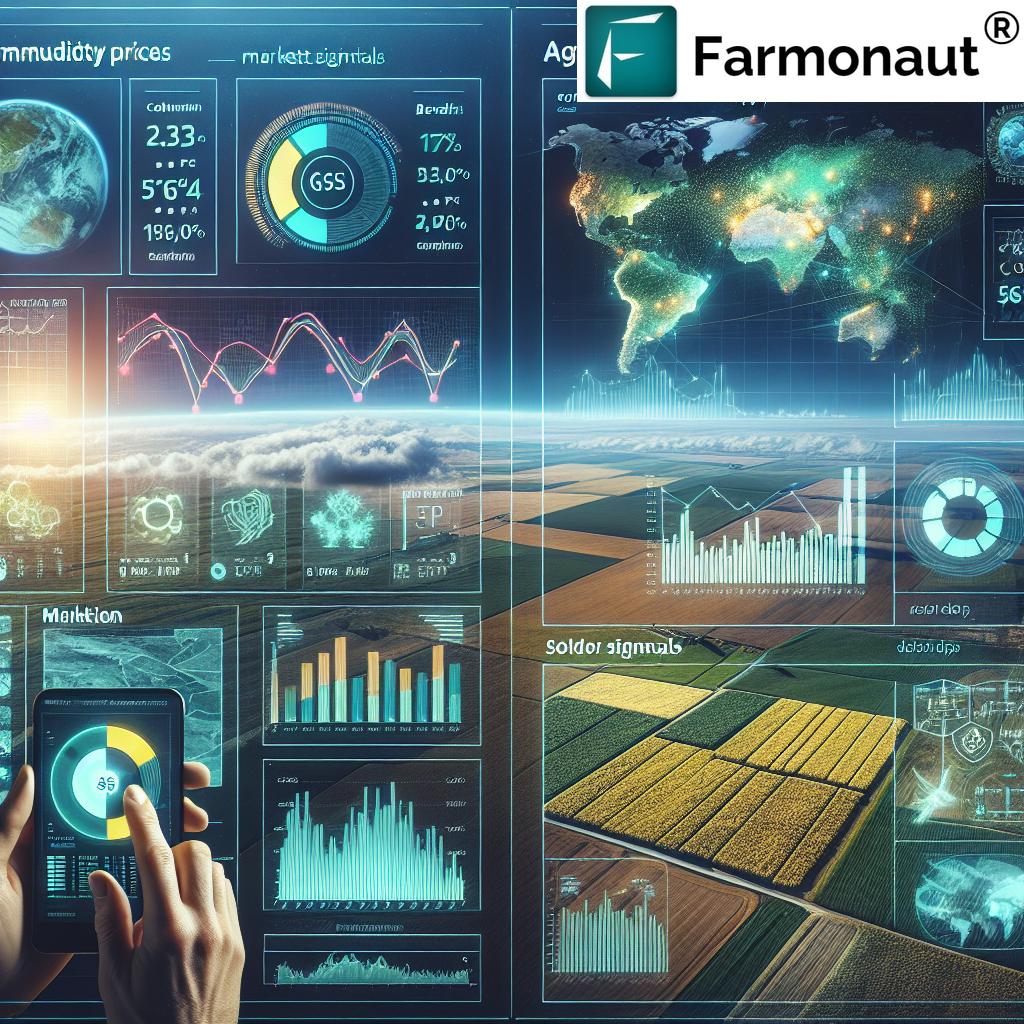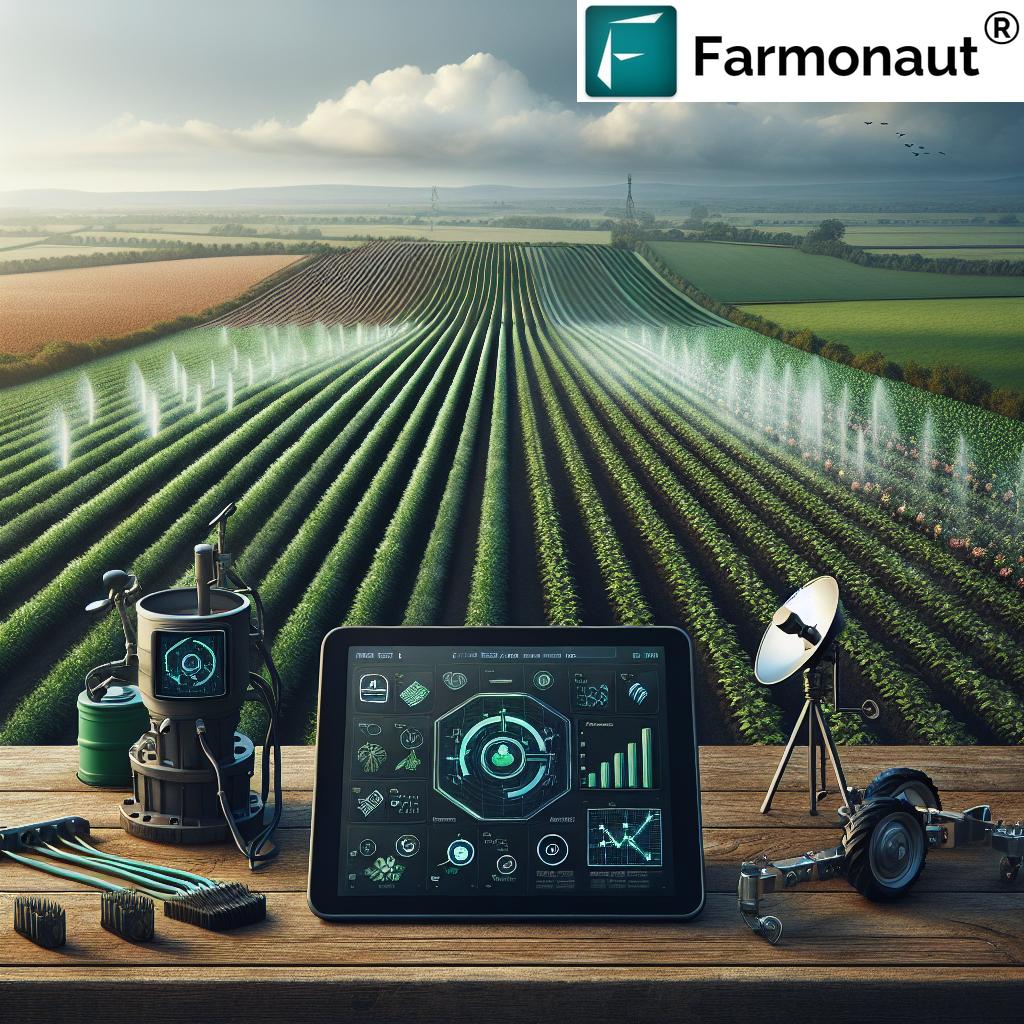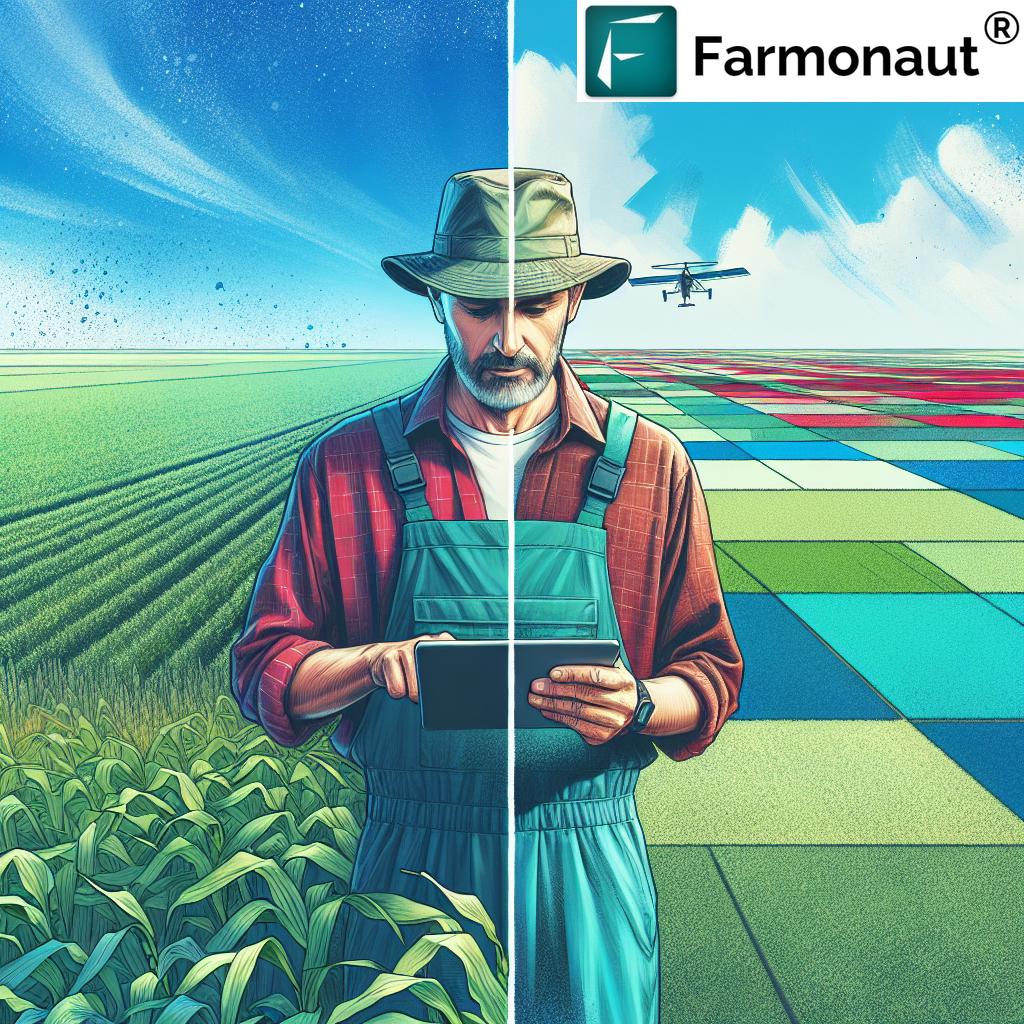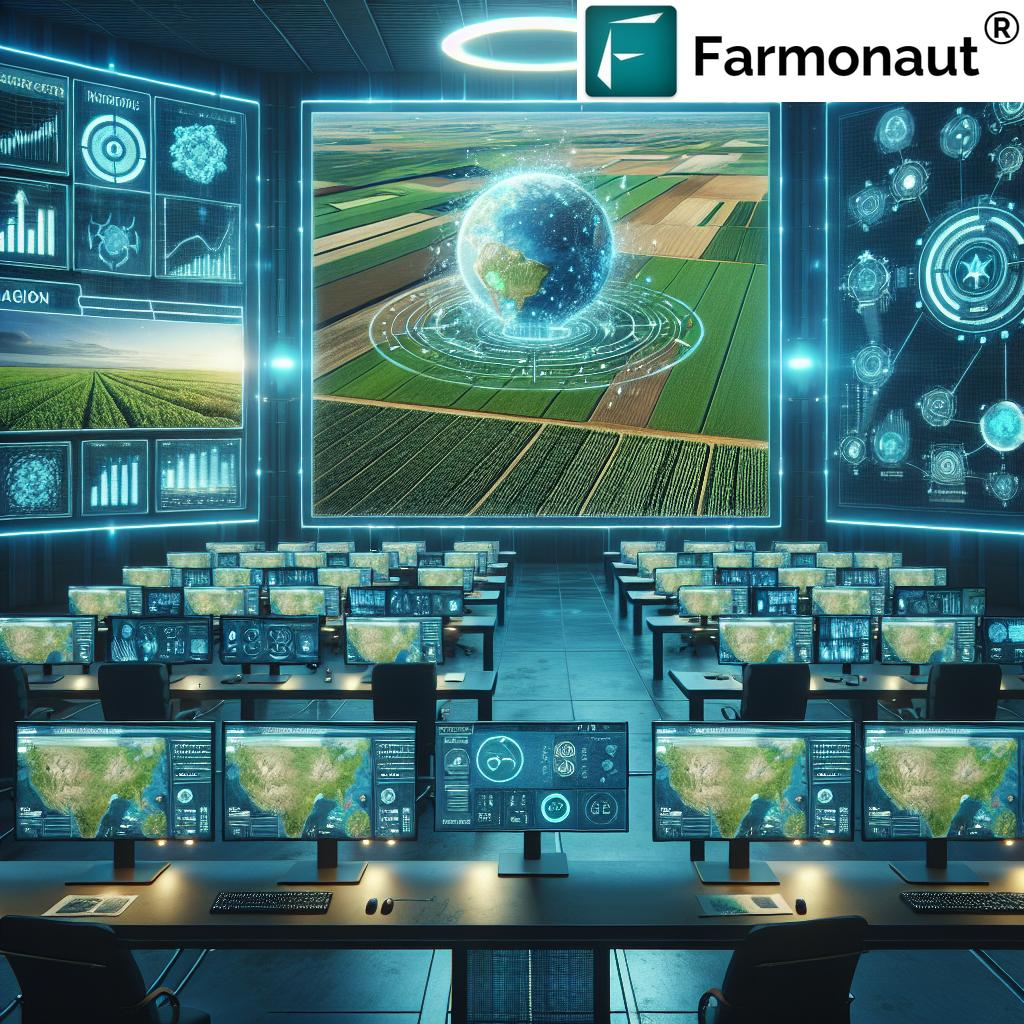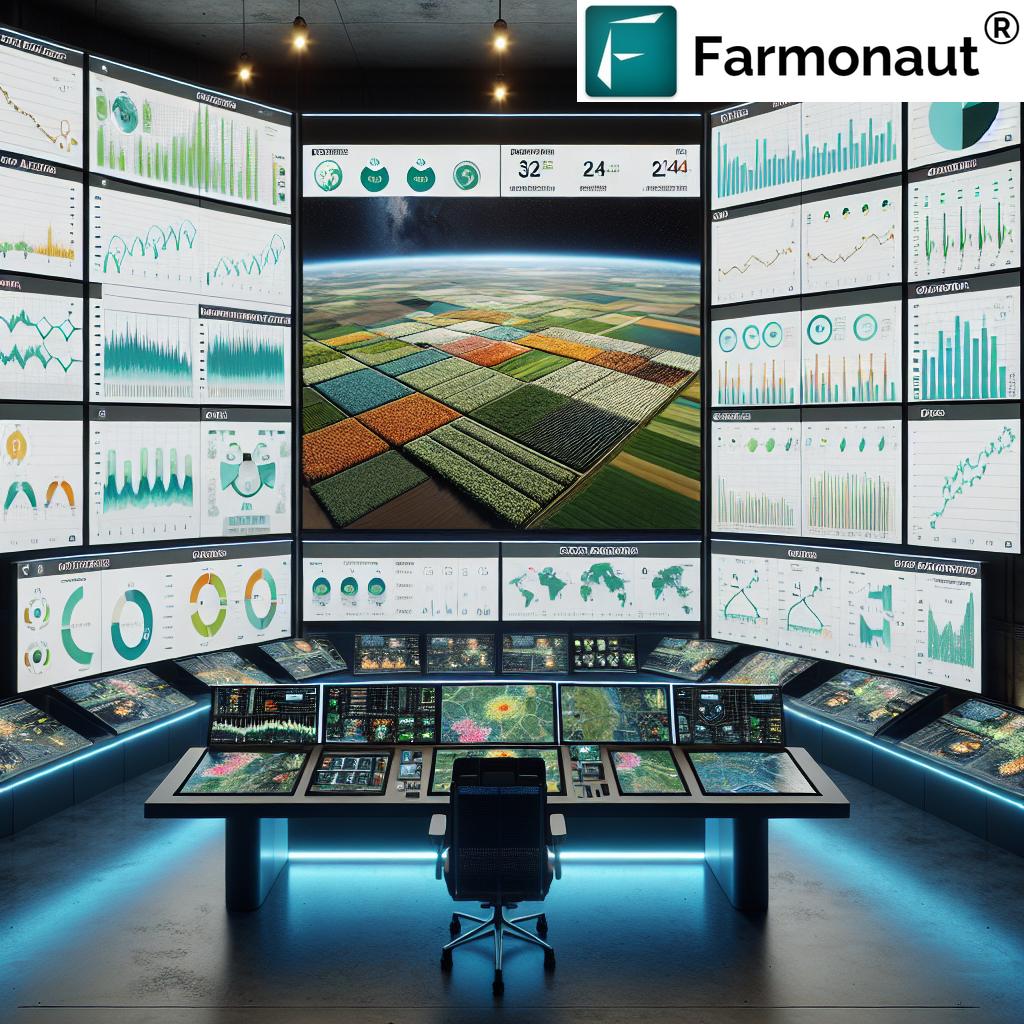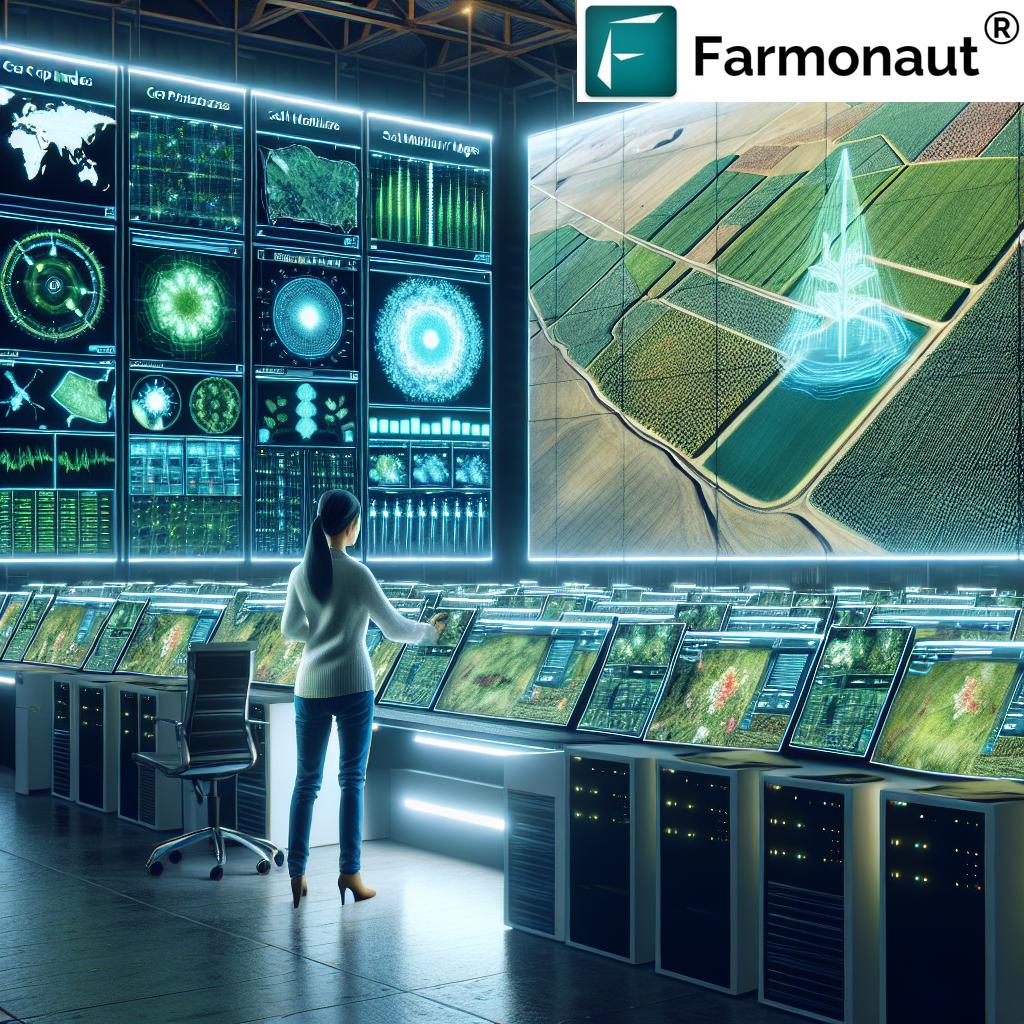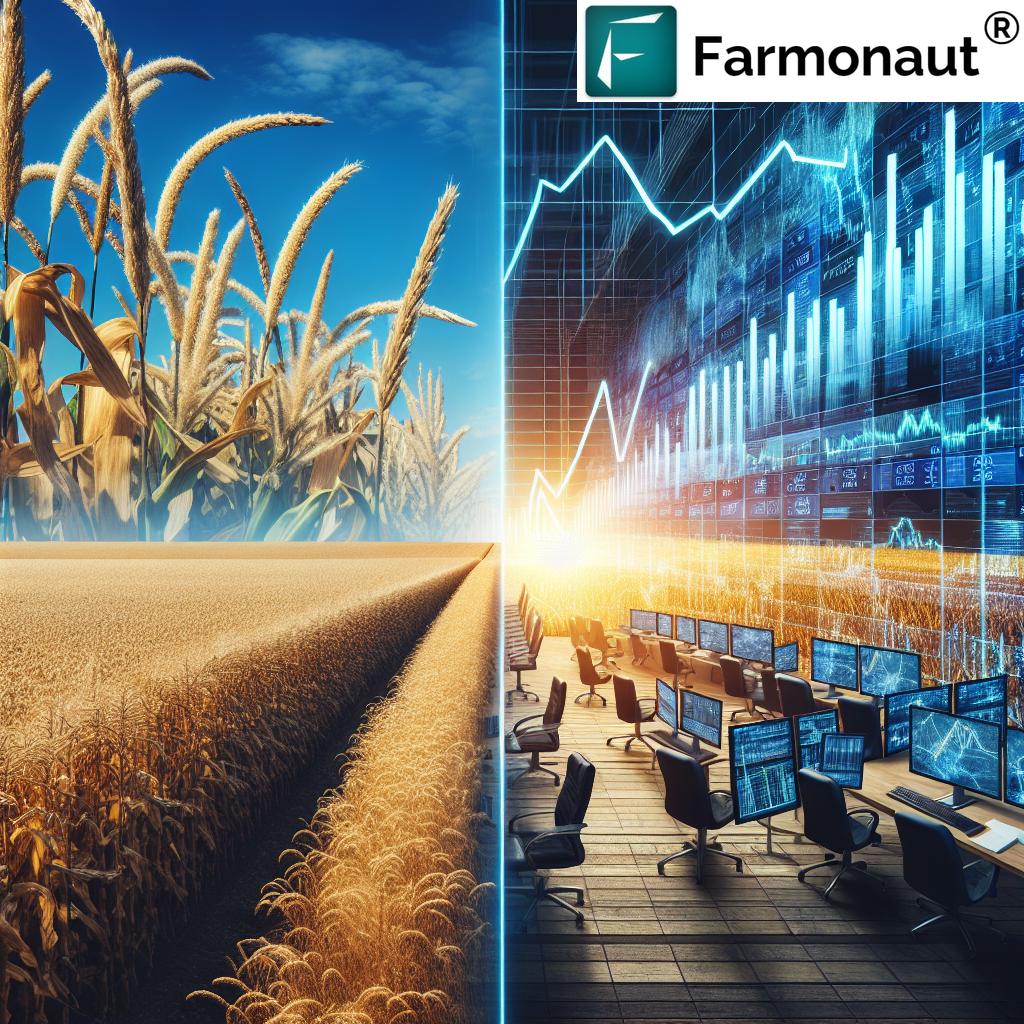Future Farming Technology: 10 Breakthroughs You Must See
“Precision agriculture can increase crop yields by up to 20% while reducing fertilizer use by 15%.”
Introduction: The Rise of Agricultural Technology Innovations
As we move deeper into the 21st century, the agriculture sector stands at the crossroads of innovation and sustainability. Never before has the need for resilient agricultural systems been so urgent—a necessity driven by increasing global population, evolving climate conditions, and the imperative for sustainable land and resource management. With mounting pressure to produce more food using fewer resources, we are witnessing an extraordinary transformation in the way we approach farming, forestry, and crop production.
At the heart of this revolution are remarkable technological breakthroughs—ranging from precision agriculture powered by sensors and IoT devices, smart irrigation systems, to the integration of artificial intelligence for real-time crop health monitoring. These innovations do not just increase yields but also enhance environmental sustainability, reduce waste, and improve resilience against climate-related challenges.
In this comprehensive guide, we’ll explore ten breakthrough technologies transforming agriculture globally. We’ll also see how platforms like Farmonaut are making these advanced tools accessible and affordable for all farmers—paving the way for a more productive and sustainable future.
1. Precision Agriculture & IoT Integration: Data-Driven Crop Management
Precision agriculture has ushered in a new era of intelligent farming. By leveraging the Internet of Things (IoT) in farming, we can now collect and process real-time data on soil moisture, environmental conditions, and plant health. This integration of IoT in agriculture helps optimize crucial operations like irrigation, fertilization, and pest control, transforming traditional farming into a thoroughly data-informed activity.
- Devices like wireless soil moisture sensors and smart weather stations transmit continuous updates to farmers, enabling precision scheduling of irrigation and fertilization.
- This approach helps reduce resource waste and ensures each crop receives exactly what it needs for optimal growth and yields.
- Automated monitoring systems can instantly alert farmers about water stress, pest outbreaks, or soil nutrient deficiencies.
The benefits of IoT integration are extensive:
- Increased efficiency: Automated systems eliminate guesswork in daily operations.
- Higher yields: Optimized application of inputs lif ts productivity by up to 20%—as highlighted above in our trivia!
- Reduced input costs: Resources like water and fertilizer are used only where and when needed.
One notable provider making precision agriculture affordable is Farmonaut. Its platform delivers real-time crop health, soil moisture monitoring, and weather analytics—accessible on Android, iOS, browser, and API. Farmers and agribusinesses worldwide use Farmonaut for resource optimization and sustainable farming.
-
Interested in integrating advanced crop monitoring into your operations?
Farmonaut’s Large-scale Farm Management app enables plantation monitoring, field analysis, and resource tracking for farms of any size.
2. Autonomous Farming Machinery & Robotics: Maximizing Efficiency
With the evolution of autonomous machinery and robotics, traditional labor-intensive operations like planting, weeding, and harvesting are becoming increasingly automated. Autonomous tractors, robotic weeders, and harvesters—equipped with GPS, precision sensors, and advanced software—can operate tirelessly, dramatically reducing the dependence on manual labor.
- Self-driving tractors can cultivate large fields all day and night, optimizing input use and improving yields.
- Robotic weeders employ machine vision to identify and eradicate weeds without disturbing valuable crops, minimizing pesticide applications.
- Drones and unmanned vehicles enable precise crop scouting and spraying, further reducing environmental impact.
The adoption of autonomous farming machinery addresses critical challenges faced by the sector:
- Labor shortages: Fewer hands needed in the field means lower labor costs and increased consistency in farm operations.
- Higher productivity: Machines work without fatigue, increasing uptime during crucial growing and harvesting periods.
- Enhanced safety: Removing humans from repetitive or hazardous tasks reduces accident risks.
Farmonaut’s Fleet Management tools further streamline the use of agricultural machinery. By tracking vehicle locations and performance, agribusinesses can optimize usage, minimize downtime, and reduce operational costs.
“Smart irrigation systems can save farmers up to 50% more water compared to traditional irrigation methods.”
3. Climate-Resilient Crops & Genetic Engineering
As the planet faces more extreme weather and rapidly changing climate conditions, it’s essential that our crops keep up. Enter the age of climate-resilient crops, bred and engineered to thrive under adverse scenarios—be it drought, flooding, elevated salinity, or heat stress.
- Genetic engineering techniques, led by breakthroughs like CRISPR, enable us to introduce traits such as drought tolerance, pest resistance, or improved nutrition directly into plant DNA.
- These crops offer hope for food security, particularly in regions facing climatic volatility and resource scarcity.
- Advanced breeding methods also help reduce the need for chemical inputs and support more sustainable agriculture practices.
Platforms utilizing real-time environmental data and AI-powered crop monitoring, like Farmonaut, assist farmers in adapting their planting schedules and input management for these new climate-smart varieties. By doing so, we can ensure stable and improved yields as climatic uncertainties grow.
4. Agrivoltaics: Dual-Use Land for Crops & Renewable Energy
Agrivoltaics is transforming the agricultural landscape by enabling dual-use of land: farming crops and generating solar energy simultaneously. By strategically placing photovoltaic panels over fields or pasturelands, farmers get two distinct benefits:
- Crop production continues below the panels, often benefiting from mild shade and less moisture loss.
- Renewable energy production provides a new income stream for farmers and contributes to our global shift toward sustainability.
Case studies worldwide show that agrivoltaic systems can improve overall land use efficiency by up to 70% and provide crucial microclimate regulation—making plants more resilient to drought and heat stress.
- Not only do these systems help farmers optimize land resources, but they’re also a vital part of sustainable agriculture practices and the global carbon-reduction agenda.
Thinking of integrating agrivoltaics or sustainable land-use models on your farm? Farmonaut’s Carbon Footprinting platform lets you track and strategize for reduced carbon emissions and improved resource efficiency.
5. Blockchain in Agriculture Supply Chain: Ensuring Transparency & Traceability
Supply chain transparency has become critical as consumers demand better quality and safety. Enter blockchain in agriculture supply chain, which digitizes every stage of the product’s journey from field to fork.
- Each transaction—harvest, storage, transport, sale—is logged on a decentralized ledger, making records permanently auditable.
- This transparency helps combat fraud, ensures product authenticity, and supports compliance with food safety standards.
- Consumers, in turn, can scan products and trace their entire history, increasing trust and brand value.
Farmonaut offers Blockchain-based Traceability solutions to agribusinesses and corporate clients. These tools are instrumental for companies wishing to secure their supply chains and maintain the integrity of organic or specialty-labelled products.
-
Explore Farmonaut’s API for integration with your product traceability workflows:
API Access |
Developer Docs
6. Vertical Farming Solutions & Controlled Environment Agriculture (CEA)
With rapid urbanization and shrinking arable land, vertical farming solutions and controlled-environment agriculture (CEA) are revolutionizing how we grow fresh produce in cities. These methods involve stacking crops in layers—or growing them in hydroponic, aeroponic, or aquaponic systems—inside controlled indoor environments.
- Advanced lighting (LED), automated nutrient delivery, and AI-powered climate control systems allow crops to be grown year-round, regardless of outside weather.
- This approach increases crop density per square meter and drastically reduces water usage compared to traditional field farming.
- Urban farms cut food transport costs and maintain nutritional quality by bringing production closer to the point of consumption.
Farmonaut’s data-driven advisory tools support urban and vertical farmers with real-time guidance for optimizing irrigation, light, and nutrient management.
-
Interested in CEA or vertical farming for your city project?
Farmonaut’s Jeevn AI Advisory System is available via web, mobile, and API integration.
7. Regenerative Agriculture Techniques & Sustainable Practices
Moving beyond conventional sustainable agriculture practices, regenerative agriculture techniques place soil health and ecosystem restoration at the core. Our focus here is on methods such as:
- Cover cropping: Planting foliage between crop cycles to fix nitrogen, add organic matter, and suppress weeds.
- Reduced tillage: Protecting soil structure, minimizing erosion, and increasing water retention.
- Rotational grazing and biodiversity enhancement: Supporting wildlife, pollinator habitats, and forest corridors.
By integrating modern data analytics and remote sensing (such as that offered by Farmonaut), we can monitor soil moisture, carbon sequestration, and biodiversity improvements in real time. This is a holistic approach to long-term agricultural productivity and environmental stewardship.
-
Learn about resource management for forests, plantations, or regenerative projects:
Crop & Forest Advisory for Sustainability
8. Smart Irrigation Systems for Optimized Water Use
Water inefficiency has historically plagued agriculture, with conventional irrigation often wasting up to half the applied water. Smart irrigation systems turn this around by using real-time soil moisture sensors, climate data, and advanced algorithms to fine-tune watering schedules.
- By watering only when and where needed, farmers can cut water use by up to 50%.
- The technology also adapts in real time to weather forecasts and plant growth stages, ensuring crops always receive optimal hydration.
- As water scarcity becomes a central challenge, these systems are crucial for sustainable crop production worldwide.
Farmonaut enables smart irrigation scheduling through its AI-powered app and satellite-based soil moisture analytics, giving farmers actionable insights for every field they manage.
9. Artificial Intelligence & Machine Learning in Farming
Perhaps no force is as transformative as artificial intelligence (AI) and machine learning in modern agriculture. By analyzing vast amounts of satellite and field-level data, AI delivers actionable insights on everything from crop health, pest infestations, drought stress, and even market forecasting.
- AI-powered models can detect disease outbreaks at their earliest appearance—minimizing yield losses and optimizing pest control measures.
- Machine learning algorithms enable predictive analytics for planning plantation schedules, input procurement, and market deliveries.
- AI-based advisory systems (like Jeevn AI from Farmonaut) provide customized recommendations, helping farmers optimize every aspect of resource application.
The integration of satellite imagery, climate data, and AI—all accessible via a user-friendly app—means precision farming is now available even to smallholders and those in remote regions. That’s the democratization of advanced agriculture.
-
Looking for AI-driven insights for insurance or crop loans?
Discover Farmonaut’s Crop Loan & Insurance Solutions, which use satellite-verifiable data for faster, fraud-resistant financing.
10. Sustainable Forestry Practices & Environmental Monitoring
Forestry is every bit as crucial as farming in terms of biodiversity, carbon sequestration, and resource management. Present-day sustainable forestry practices include:
- Selective logging: Harvesting only mature trees to preserve ecosystem integrity.
- Agroforestry: Integrating trees into croplands or pastures for enhanced land productivity and climate resilience.
- Reforestation: Planting trees to restore native habitats and absorb carbon dioxide.
Technology—especially remote sensing (satellite imagery, GIS mapping) and AI analytics—gives us precise, up-to-date intelligence on forest health, growth rates, and biodiversity status. This is vital for both conservationists and commercial forestry operators seeking to balance utilization with sustainability.
-
Track your forest or plantation’s ecosystem health:
Farmonaut’s Crop Plantation & Forest Advisory delivers satellite-driven health reports and management suggestions.
Comparison Table: Top 10 Farming Technologies and Their Impact
| Technology Name | Core Feature | Estimated Year of Adoption | Potential Yield Increase (%) | Sustainability Impact | Example Crops/Regions |
|---|---|---|---|---|---|
| Precision Agriculture & IoT Integration | Real-time sensor-based crop monitoring | 2015–present | 10–20% | Reduced input waste, data-driven management | Wheat, Maize—India, US, Europe |
| Autonomous Machinery & Robotics | Self-driving tractors, robotic harvesters | 2020–2025 | 8–15% | Lower labor needs, reduced fuel use | Rice, Sugarcane—Asia, Americas |
| Climate-Resilient Crops & Genetic Engineering | Breeding for resilience and nutrition | 2017–2025 | 5–30% | Stable yields in extreme climates | Millets, Maize—Africa, South Asia |
| Agrivoltaics | Dual-use land for solar + crops | 2018–present | 5–12% | Energy generation, water efficiency | Vegetables—Mediterranean, India |
| Blockchain Supply Chain | Digital, traceable ledgers | 2020–present | 2–8% | Transparency, fraud reduction | Organics—Global |
| Vertical Farming & CEA | Indoor, soil-less, layered production | 2015–2025 | 20–25% | Urban food security, water savings | Leafy Greens—Urban, Asia/Europe |
| Regenerative Agriculture | Soil-building, biodiversity focus | 2010–present | 10–15% | Carbon sequestration, improved soil health | Cereals, Legumes—Global |
| Smart Irrigation Systems | Sensor-driven, adaptive watering | 2018–2025 | 7–14% | Water conservation up to 50% | Fruits, Vegetables—India, Israel, US |
| AI & Machine Learning in Farming | Predictive analytics, customized advice | 2020–present | 10–18% | Resource savings, better forecasting | All crops—Global |
| Sustainable Forestry Practices | Selective logging, remote sensing | 2010–present | 3–10% | Ecosystem preservation, carbon sinks | Plantations, Rainforests—Global |
Farmonaut’s Edge in Precision Agriculture & Farm Management
The ongoing revolution in farming technology is only meaningful if it’s accessible to those who need it most—farmers, cooperatives, agribusinesses, and even government agencies. This is where Farmonaut excels, standing as a leading provider of advanced, affordable, and scalable agricultural technology worldwide.
- Satellite-Based Crop Health Monitoring: Using daily multispectral imagery, Farmonaut provides up-to-date maps on crop stress, pest outbreaks, soil moisture, and nutrient status. This level of insight was previously only available to the largest corporate farms—but is now within reach for everyone.
- AI & Jeevn Advisory System: Farmonaut’s AI-driven recommendations are personalized to every field. From irrigation and fertilization timing to pest and disease management, precision is at your fingertips on mobile or web.
- Blockchain Traceability: Farmonaut allows businesses to secure the authenticity of their agricultural supply chains. This gives both regulators and consumers the confidence they need in product quality and safety.
- Resource & Fleet Management: Keep tabs on every vehicle, machine, and resource—reducing fuel, costs, and operational risk with Fleet Management solutions.
- Carbon Footprinting: With real-time emission tracking, Farmonaut enables compliance with global standards and moves your farm or agribusiness toward true sustainability.
- Flexible Access: Farmonaut’s entire platform is accessible via Android, iOS, browser, and developer-friendly APIs.
Farmonaut’s modular subscription model allows users to tailor solutions to their needs—from smallholders to large enterprises. This means scalable, world-class precision agriculture is no longer exclusive or cost-prohibitive.
FAQ: Future Farming Technologies
What is precision agriculture and how does it help farmers?
Precision agriculture combines data from sensors, satellites, and IoT devices to help farmers monitor and manage their crops with scientific accuracy. This enables optimized application of water, fertilizers, and pesticides, resulting in higher yields, reduced input costs, and more sustainable land use.
How do smart irrigation systems conserve water?
Smart irrigation systems use real-time soil moisture and weather data to deliver water exactly when and where crops need it. This minimizes water waste and ensures plants get optimal hydration, significantly reducing overall water usage—up to 50% compared to traditional irrigation.
What role does AI play in modern agriculture?
AI analyzes large volumes of agricultural data to identify trends, forecast risks, and generate tailored agronomic advice. It can detect pest and disease outbreaks early, guide planting and harvesting schedules, and help optimize every aspect of farm management.
What is the benefit of blockchain in agriculture supply chains?
Blockchain creates an immutable, transparent ledger of every step a food product takes—from field to consumer. This enhances food safety, builds trust, and reduces fraud by providing full traceability of origin, storage, and handling.
How does Farmonaut make advanced agriculture affordable?
By relying on satellite imagery and AI, Farmonaut delivers real-time crop analytics and advisory services without the need for expensive on-field hardware, making world-class precision farming accessible to all farm sizes and budgets.
Who can benefit from Farmonaut’s platform?
Individual farmers, agribusinesses, government institutions, NGOs, financial agencies, and corporate clients in agriculture, food processing, and textile sectors.
Is Farmonaut available globally?
Yes. Farmonaut’s app, web, and API services are designed for farmers and agribusinesses worldwide—customizable to regional crops and languages.
Conclusion: Embracing the Future of Sustainable Agriculture
The future of farming technology is here and more exciting than ever. By adopting these breakthrough innovations—from IoT-based precision agriculture to AI-powered advisory and blockchain transparency—we are equipped to meet the dual challenges of feeding a growing planet and protecting our environmental resources.
Farmonaut stands out as an innovator, providing affordable, accessible, and actionable farm management solutions using satellite technology, AI, and blockchain. Our mission is to empower every farmer—large or small—to produce more with less, ensuring both agricultural productivity and long-term sustainability.
-
Join us on the journey to next-generation agriculture:
Download the Farmonaut app now and experience the power of precision farming in your hands.
Together, we can cultivate a future where technology and nature coexist in harmony—ensuring food security, climate resilience, and prosperity for generations to come.


